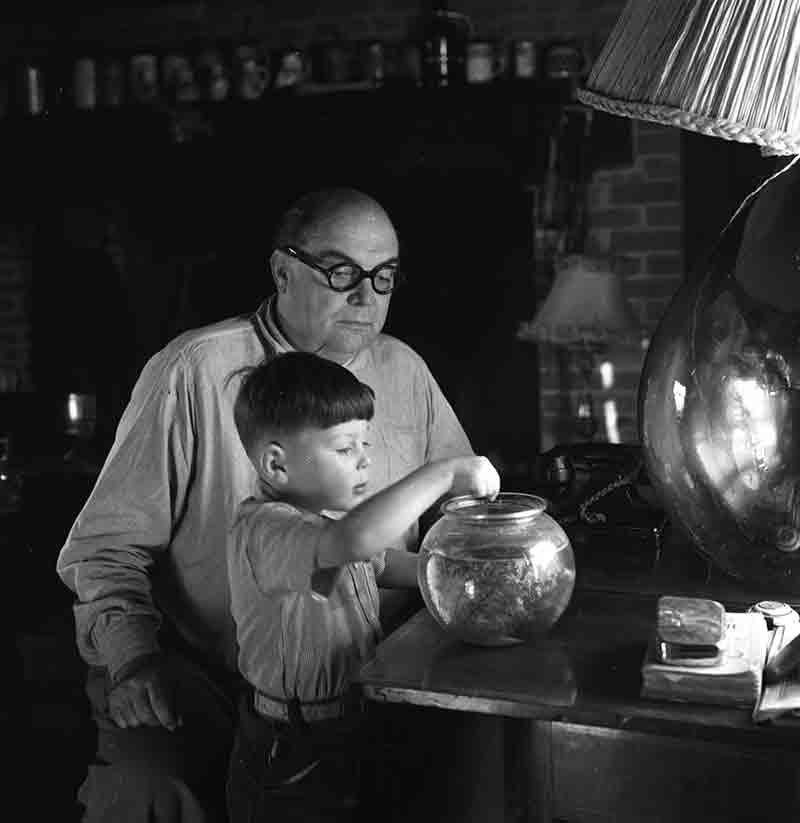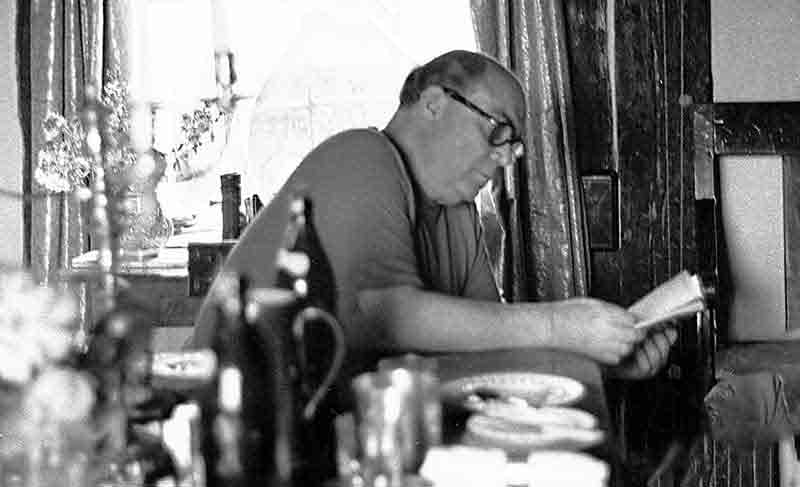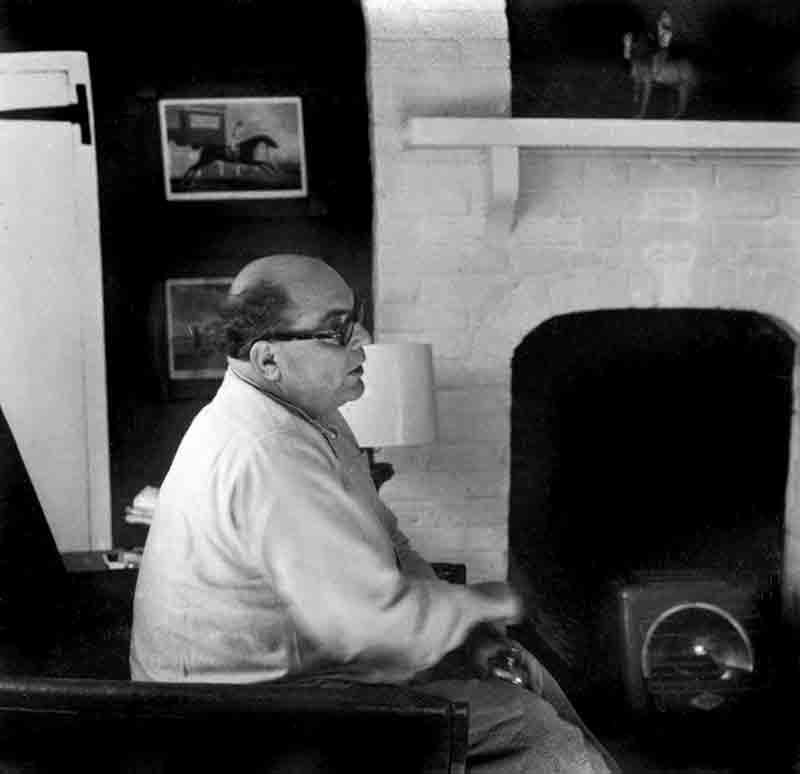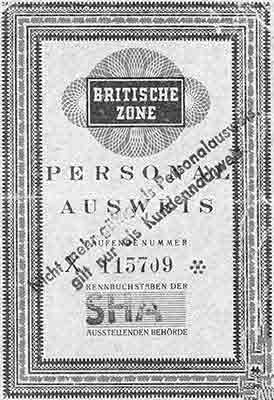During the Second World War Sefton Delmer led a black propaganda campaign against Hitler by radio from England. He had an extraordinary ability to empathise and understand the German mind.

Sefton Delmer (1904 – 1979), whose dispatches were probably read by more people than any other British foreign correspondent's in the years before and after World War II, was born and brought up in Berlin, where his father was Professor of English at the University.
He spoke and thought as fluently in German as he did in his native tongue, which gave him, when he came in the 'twenties and 'thirties to live again and work as foreign correspondent of the Daily Express in Germany, a unique insight into, and to a large extent sympathy with, the German character.
He himself regarded this attribute both as a gift and a curse. During the Second World War he led a black propaganda campaign against Hitler by radio from England, so successful that he was named in the Nazis' Black Book for immediate arrest after their planned invasion of Britain.
Nachrichten für die Truppe, a propaganda newspaper, was put together daily by a joint team of British and American journalists under the direction of Sefton Delmer. Up to a million copies were then air-dropped onto German troops on the Western front by a dedicated squadron of the US Eighth Air Force. It was the first newspaper to report the D-day invasion.
Early in 1941, Mr. Delmer was made head of a newly created special section of the Political Warfare Executive, charged with the task of spreading what became known as "black" propaganda amongst the enemy. He started with a secretary and one assistant, but from these small beginnings developed one of the most curious and fascinating by-products of the whole war.
The task of Mr. Delmer's team, which grew to include such disparate personalities as a history don, an inspector of schools, a banker, a newspaper editor and an assortment of German and other refugees, was to launch broadcast propaganda which purported to come from a German station.
Much of what was broadcast was the truth - gleaned often from the tapped conversations of German prisoners - much of it had a ring of truth, sometimes it even deceived the American allies.

Nachrichten für die Truppe, a 'grey' propaganda newspaper, was put together daily by a joint team of British and American journalists under the direction of Sefton Delmer. Up to a million copies were then air-dropped onto German troops on the Western front by a dedicated squadron of the US Eighth Air Force.
Nachrichten contained a mix of factual news intermixed with subversive propaganda. The front page accurately reported the war situation on all fronts, often before German troops received the news from their own sources. It was the first newspaper to report the D-day invasion.
The inside pages generally dealt with the situation on the home front. The corruption of the Nazi bosses (Bonzen) was highlighted, how they avoided military service, lived in luxury villas outside the cities to avoid air raids, received extra "diplomatic" food rations and basically profiteered from the war.

In the first half of 1944, characters like Paul the Dutchman, Talleyrand the Pole, and, in particular, Cato the Spaniard, brought the Allied Deception Programme to its peak and, it can be claimed, had an incalculable effect on the course of the Second World War. The Allies set themselves the job of persuading Hitler of three things.
First before D Day, that the invasion was being postponed, and that an assault on Norway was highly probable. Second, that if and when the invasion came, the Pas de Calais and the Belgian coast would be the target. Third, once the Normandy landings happened, that they were merely a diversion to draw down Axis troops from the Pas de Calais and leave it defenceless.

The Germans fondly believed that Paul, Talleyrand, and Cato were impeccable sources of intelligence, agents operating at the heart of the Allied war effort. Agents they were, but double agents as well. Through them an elaborate tissue of myth was woven which fogged the Germans’ vision and made the Normandy landings unexpected and unrecognisable for what they were.
A network of 25 agents was invented for Cato, ranging from Welsh Nationalists to a dowdy sex starved female in the War Cabinet Office. Imaginary armies, fleets of landing craft, tanks, and planes were summoned up, deployed and manoeuvred by means of wireless signals and dummy models, to give substance to Cato’s warnings about Norway, or the Pas de Calais.
The British Zone
The Canadian Army was tied down in surrounding the Netherlands until the Germans there surrendered on 5 May 1945—just two days before the final surrender of the Wehrmacht in Western Europe to U.S. General Dwight D. Eisenhower. After the liberation of the Netherlands and the conquest of Northern Germany by the British Army, the bulk of the Canadian Army returned home, leaving Northern Germany to be occupied by the British Army.

After the Second World War, Delmer was commissioned to set up the first news agency in the British zone, called the German News Service. He recruited 63 employees.
Among the recruited radio operators and telex operators, interpreters, mathematicians, physicists, photographers and news assistants was Peter Bock-Schroeder.
In 1948 Delmer returned to the U.K. as chief foreign affairs reporter for the Daily Express. Over the next fifteen years, he covered nearly every major foreign news story for the newspaper.